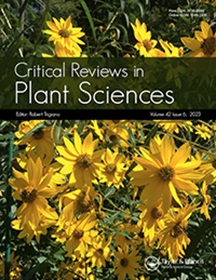蒲公英(Taraxacum)是天然橡胶、食品和药用植物生物学的一个模式系统,了解蒲公英中生物活性化合物的生物合成和调控机制
IF 6
2区 生物学
Q1 PLANT SCIENCES
引用次数: 2
摘要
属于蒲公英属的植物通常被称为蒲公英;它们是菊科中进化最快的植物,有2000多种分布在世界各地。蒲公英不仅包括药用植物,还包括橡胶生产植物。近年来生物技术的进步和对蒲公英需求的增长,增加了对蒲公英的研究关注。由于已获得了樟子蒿(Taraxacum koko -saghyz)和樟子蒿(Taraxacum mongolicum)全基因组序列。GWHBCHF00000000和GWHAAAA00000000),以及kk -saghyz、Taraxacum officinale、Taraxacum mongolicum和Taraxacum antungense的大型转录组和代谢组数据库(检索号:GWHBCHF00000000)。PRJNA378120, PRJEB48186, PRJNA897666和PRJNA578773),在了解酚酸、黄酮类、萜类、橡胶等生物活性化合物的生物合成及其调控机制方面取得了重大进展。本文对蒲公英属植物进行了综述;具体而言,我们描述了以下内容:(1)遗传转化系统的最新成果;(2)生物活性化合物和天然橡胶的生物合成途径;(3)不同次生代谢物生物合成中的相互作用;(4)环境和蒲公英繁殖模式在次生代谢物生物合成中的相关性;(5)蒲公英未来的研究方向。这也为进一步研究其他药用和食用植物奠定了基础。本文章由计算机程序翻译,如有差异,请以英文原文为准。
Understanding the biosynthesis and regulatory mechanisms of bioactive compounds in Taraxacum species (dandelions), a model system for natural rubber, food, and medicinal plant biology
Abstract Plants that belong to the genus Taraxacum are commonly referred to as dandelions; these are some of the most evolved plants in the Asteraceae, with more than 2000 species distributed worldwide. Dandelions not only include medicinal plants but also rubber-producing plants. Recent advances in biotechnology and the growing demand for dandelions have increased research attention toward dandelions. Owing to the availability of the whole genome sequence of Taraxacum kok-saghyz, and Taraxacum mongolicum (accession no. GWHBCHF00000000 and GWHAAAA00000000), and large transcriptome and metabolome databases for T. kok-saghyz, Taraxacum officinale, T. mongolicum, and Taraxacum antungense (accession no. PRJNA378120, PRJEB48186, PRJNA897666, and PRJNA578773), significant progress has been made in understanding the biosynthesis and regulatory mechanisms of phenolic acids, flavonoids, terpenoids, rubber, and other bioactive compounds. This review focuses on Taraxacum spp.; specifically, We describe the following: (1) the recent results of genetic transformation systems, (2) biosynthetic pathways of bioactive compounds and natural rubber, (3) cross-talk in the biosynthesis of different secondary metabolites, (4) the relevance of the environment and the reproductive mode of dandelions in secondary metabolite biosynthesis, and (5) future research directives for dandelions. This review also lays the foundation for further research on other medicinal and edible plants.
求助全文
通过发布文献求助,成功后即可免费获取论文全文。
去求助
来源期刊
CiteScore
12.90
自引率
1.40%
发文量
15
审稿时长
>12 weeks
期刊介绍:
Critical Reviews in Plant Sciences focuses on presenting in-depth and up-to-date reviews of timely and/or cutting-edge subjects in the broad discipline of plant science, ranging from molecular biology/biochemistry through the areas of cell biology, plant pathology and physiology, genetics, classical botany, and ecology, to practical agricultural applications. Articles in the journal provide an up-to-date literature base for researchers and students, pointing the way towards future research needs. The journal is also a significant source of credible, objective information to aid decision makers at all levels.

 求助内容:
求助内容: 应助结果提醒方式:
应助结果提醒方式:


